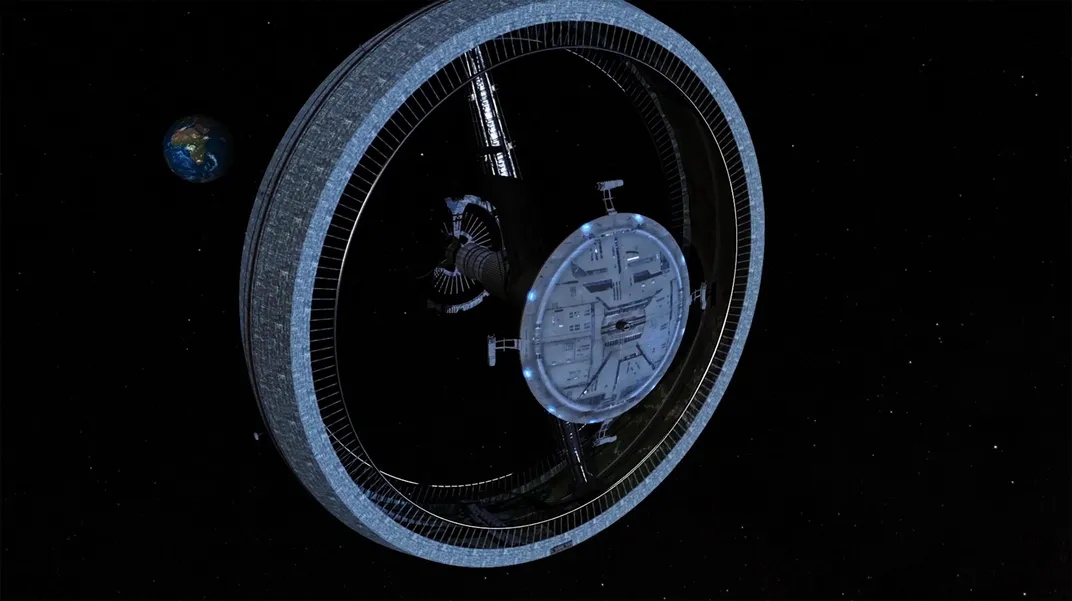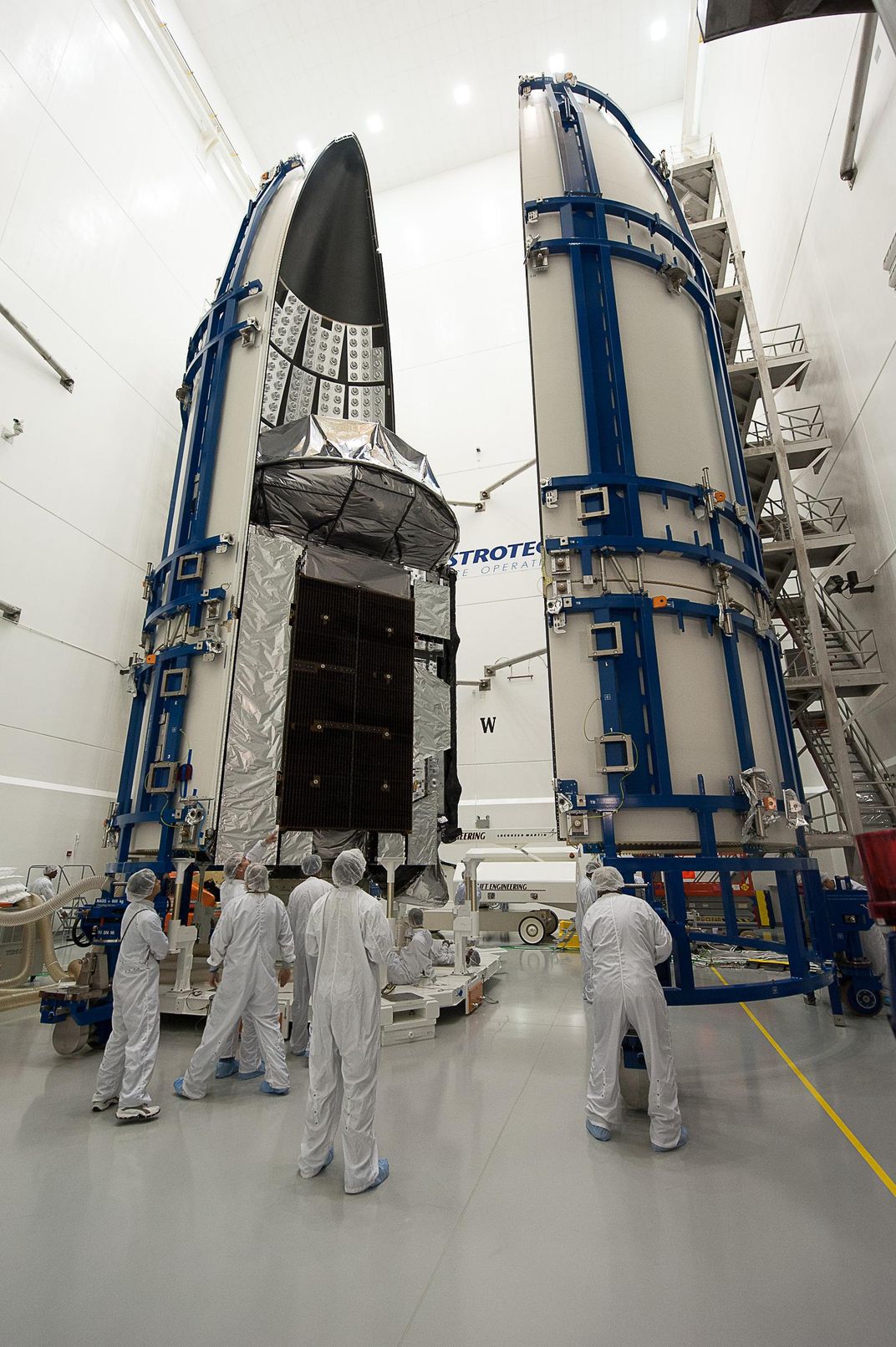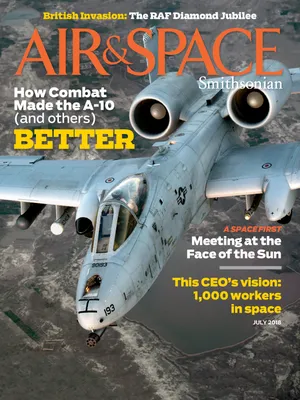Tory Bruno, the Other Rocket Man
ULA’s boss doesn’t want SpaceX to have all the fun.
:focal(603x822:604x823)/https://tf-cmsv2-smithsonianmag-media.s3.amazonaws.com/filer/b4/fc/b4fc7681-41bc-4f96-9d00-75a1f2c22e3a/14d_jj2018_open_torybruno_eft1_live.jpg)
Tory Bruno resists the temptation to trash-talk Elon Musk, for the most part. Holding back can’t be easy. Among space enthusiasts, Musk and the company he founded, SpaceX, are the disrupters, the swashbuckling innovators whose cheap, reusable rockets will pave the way for an explosion of orbital commerce and creativity. Old Space, according to this construction, stays hopelessly mired in the past.
Bruno is in charge of the establishment empire striking back. The imperium in this case is United Launch Alliance, a joint venture of America’s two aerospace titans, Boeing and Lockheed Martin, mashed together a dozen years ago to create a reliable national delivery service for U.S. military spacecraft and NASA. Reliable ULA has been, its Delta and Atlas rockets completing 122 successful launches as of last fall, and five more since.
“One of the subtle things you would notice, if you hung out with us, is that we count,” says Bruno, during a break from an executive meeting held at a hotel near the company’s manufacturing center in Decatur, Alabama. (Corporate headquarters is near Denver.) “We have a slide we show internally, which shows 122 boxes with little pictures of rockets, and a little blank box at the end. That’s the most important mission: the very next one.”
Reliability, though, is less inspiring than inventiveness. Michael Lopez-Alegria, former astronaut and ex-president of the Commercial Spaceflight Federation, explains how the rival companies are perceived. “SpaceX is famous for working young kids to the bone, burning them out in two to three years, and still having a line around the block waiting to get in,” he says. “I don’t know that ULA has that kind of dynamic going on.”
Bruno, 55 years old to Musk’s 47, responds graciously to being cast in the “clueless old duffer” role. “Elon Musk is someone you have to absolutely admire for the excitement he has brought back to space,” he says. “Space was getting kind of boring for the general public.”
Then he’s unable to resist any longer. “He’s not as present in the space community as Gwynne Shotwell, the president of SpaceX,” Bruno says, a gentle jab hinting that the polymath Musk’s mind may be occupied elsewhere. Bruno wonders if SpaceX might be a little too obsessed with its long-term vision of colonizing Mars (Musk wants to move a million people there over the next century) to sweat the details of mundane cargo launches today. “SpaceX is very focused on going to Mars, and they talk about how the other work they do generates resources for that,” he says. “I care a lot about the missions we’re launching every day, and so do my people.”
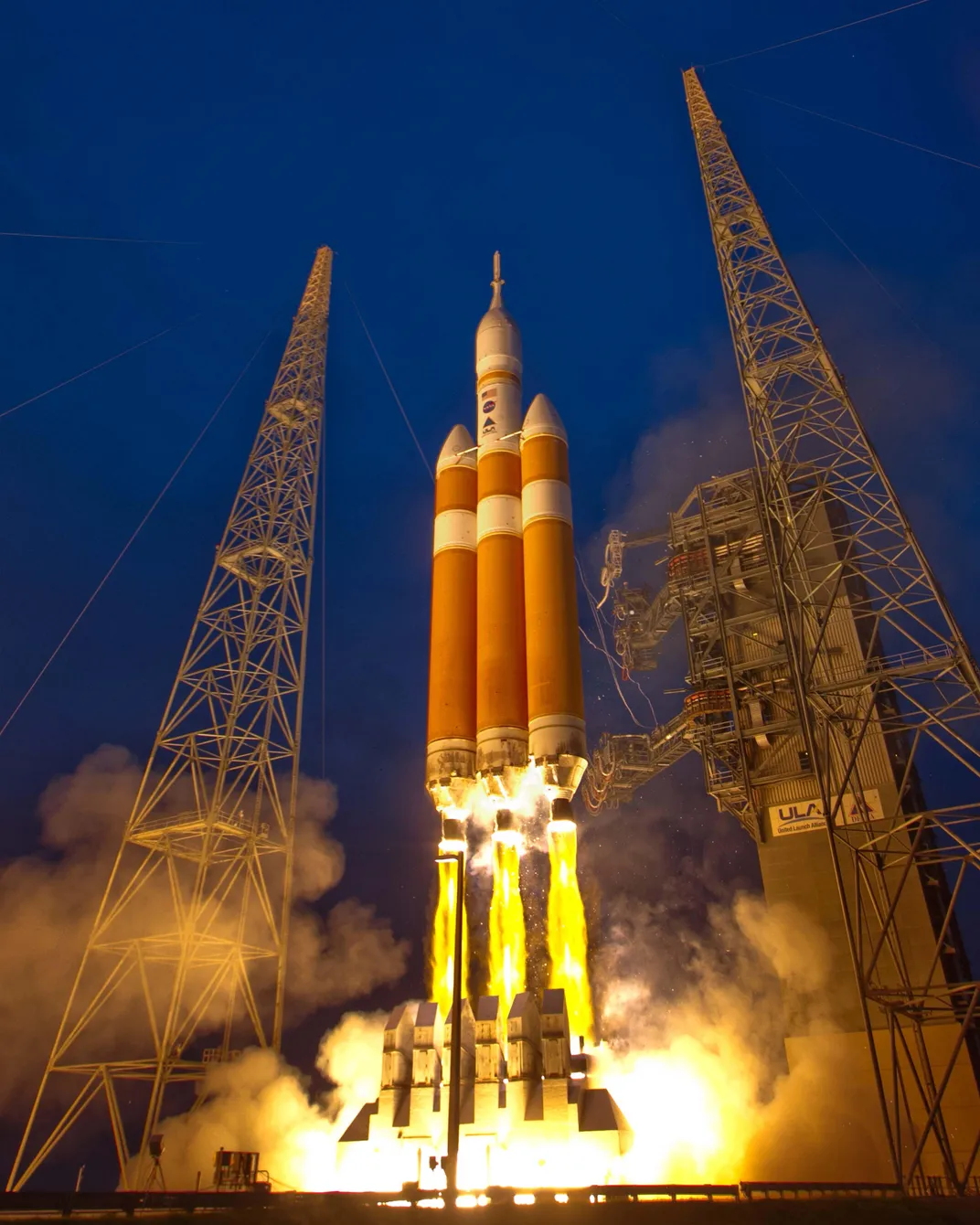
However he regards his fellow space CEO, Bruno has Musk to thank for his job, in a not-so-direct way. ULA didn’t have to worry about changing the launch business until the annoying SpaceX came along and claimed it could build rockets for a fraction of what Old Space charged. In 2014, Musk sued the U.S. Air Force to institute competitive bidding on its launches, which at that point were all going to ULA’s Delta and Atlas. The Air Force partially agreed in 2015, and now launch contracts are split between the two companies. Meanwhile, the military’s market share in space launches is shrinking, as the proportion of commercial and NASA payloads has grown. Bruno himself has forecast that national security launches will shrink from 60 percent of ULA’s revenue in 2016 to 40 percent in 2020.
“I would not be developing new technologies if we didn’t have a reason to, and an opportunity to show that it was a good investment,” Bruno observes. Translation: Without SpaceX’s price-cutting, reusable-rocket revolution, ULA could have kept on providing lucrative, “cost-plus” (where the seller is guaranteed a certain markup no matter what the unit cost), highly reliable launches to the U.S. government under the leadership of its first CEO, Michael Gass, or someone like him. Instead, in August 2014, the overseers at Boeing and Lockheed saw the need to shift paradigm. They drafted Bruno to compete with Musk.
The incoming chief executive faced another big headache besides SpaceX. Since ULA’s inception, it had relied on a Russian-built engine, the RD-180, to power its workhorse military rocket, the Atlas V. That partnership had been formed in the early days of post-Soviet goodwill. But by mid-2014, following Russia’s invasions of Ukraine, legislators led by Senator John McCain of Arizona were clamoring to replace the Russian rocket engine. After a few years of wrangling, Congress set a 2022 deadline for phasing out the RD-180.
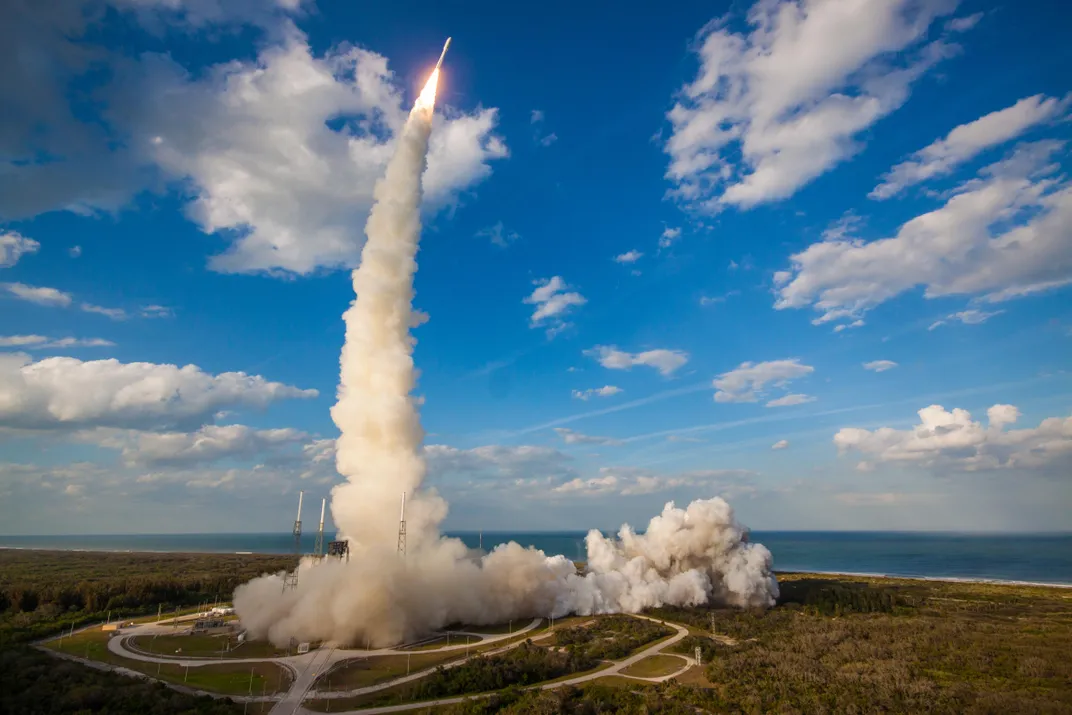
The Reluctant Manager
At first glance, Salvatore T. Bruno seemed an odd choice for a change CEO. His résumé is as establishment as they come. At California Polytechnic State University, better known as Cal Poly, Bruno studied mechanical engineering. He went to work at Lockheed right after graduation in 1984, and stayed there for the next 30 years. His career was brilliant but monochromatic, as he steadily climbed the ladder inside the giant military contractor’s missile business—working on, as he puts it, “high-consequence-if-it-doesn’t-work” missions. “I loved being a rocket scientist, absolutely loved it,” Bruno recalls. “After ten-plus years, I sort of reluctantly agreed to be a manager.”
He was good at it. He oversaw the Navy’s Trident II ballistic missile program—150 test launches without a hitch—and the Air Force’s THAAD anti-missile system, which in the Kim Jong Un era has gained trust and even greater significance. He managed Lockheed’s part of the Atomic Weapons Establishment, or AWE, a consortium that produces the United Kingdom’s nuclear warheads. Bruno’s last job at Lockheed was general manager for strategic and missile defense systems. Bald and suit-clad, calm and unhurried in demeanor, he seemed a perfect continuity choice for ULA’s no-failure-tolerated, cost-not-much-object culture.
Yet Bruno’s buttoned-down profile conceals a surprise or two. He grew up on a ranch in California’s Sierra Nevada, where he learned to shoot and ride (his Twitter bio includes “Horseman” among his professional titles). Raised by his grandmother, he worked as a lumberjack, commercial fisherman, and other assorted jobs to put himself through Cal Poly, where he was on the fencing team. He has a mild obsession with medieval history, and carved time out from defending the Free World to publish two weighty volumes on management lessons from the Knights Templar—the “first multinational conglomerate.”
Bruno also had an eye on the future, the one taking shape right in the Lockheed missile division’s hometown, Sunnyvale, California. As executive director of the Silicon Valley Leadership Group, founded in the 1970s by David Packard of Hewlitt-Packard fame, he spent time trawling for new ideas among the tech-forward super-elite. One of the big brains he met in this capacity was a young entrepreneur named Elon Musk, who, around 2000, was approaching Valley big shots to tout a service called PayPal. “He was a very dynamic fellow even then,” Bruno recalls.
Nearly two decades later, with SpaceX having helped revitalize public interest in spaceflight, Bruno has conceived a Big Vision of his own. Where Musk maps out cities on Mars, ULA’s new chief dreams of populating cis-lunar space--—between Earth and the moon—with 1,000 people working on profitable enterprises, such as mining water from lunar soil and asteroids.
Meanwhile he has embraced 21st century PR tactics, jumping on Twitter to lend a warm, witty voice to the usually staid rocket business. @torybruno tweets almost daily, bantering with interlocutors with handles like The Rogue Astronaut and TitanII. His tweets are laced with “Wow” and “Cool,” and even the occasional emoji.
On a more serious front, Bruno has addressed the problem—for ULA and other legacy launch providers—of SpaceX’s disruptive pricing. Musk’s new Falcon Heavy sells for between $90 million and $150 million a launch, far less than the competition costs. After taking a hard look at his company’s pricing in 2014, Bruno audaciously promised to halve the cost of ULA’s launches within three years. Nearly four years later, he says he has brought prices down by 36 percent. In February, he quoted a price of $350 million for a Delta IV Heavy, currently the largest rocket in ULA’s fleet.
The original idea behind ULA was to reap efficiency by combining two formerly competing rocket families, Lockheed’s Atlas and Boeing’s Delta. It didn’t quite work out that way. Under the joint ULA roof, the two clans remained separate, if not hostile, duplicating management functions and costs from top to bottom. “The staffs from the two product lines didn’t really mix all that much,” Bruno says. “They had their own cultures.” He banged his fractious subordinates’ heads together, leaving “one-third fewer boxes on the organization chart.”
ULA also suffered from having too many rocket configurations. To satisfy every whim of its primary customer, the military, it still theoretically offers 41 configurations. But all that customizing is expensive. Recently, ULA has tried to focus on a few core Delta IV and Atlas V variants. After 100 straight successful launches going back to 1997, the Delta II will make its final flight this year, easing into well-deserved retirement.
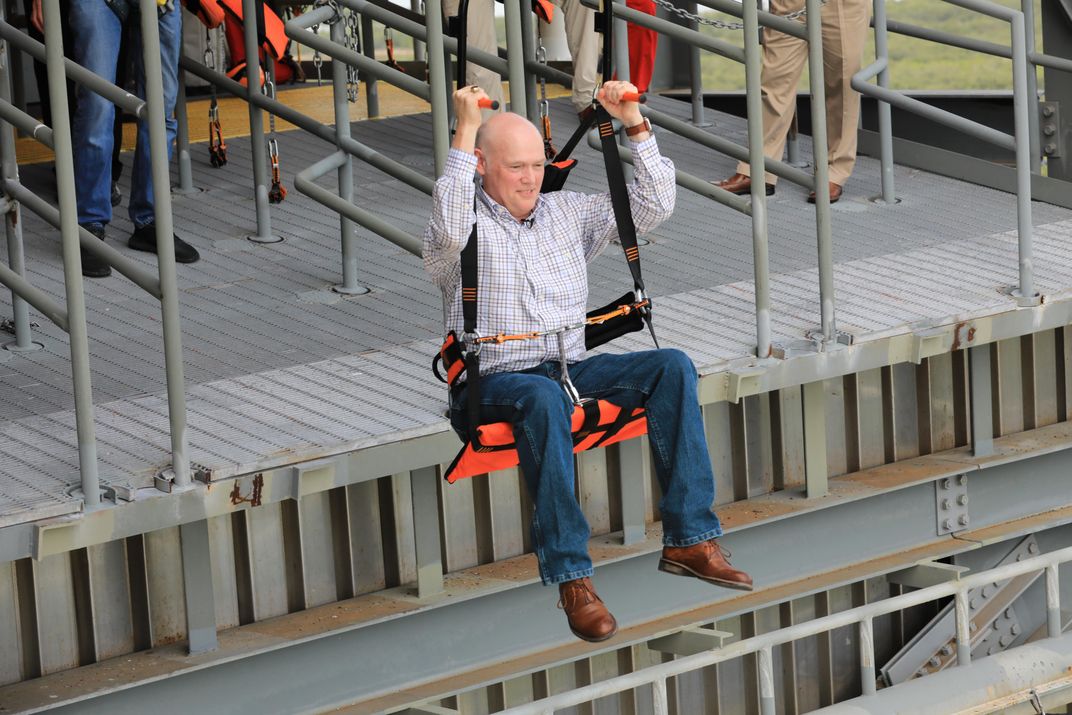
Reducing ULA’s costs has, not surprisingly, meant cutting payroll. Bruno first tried to “right-size,” as he puts it, through voluntary early retirements in a workforce that was already experiencing a “gray tsunami.” But others got pink slips. He declines to give exact numbers, but press reports indicate the company cut 25 percent from a workforce of around 3,400.
Bruno thinks he and the other ULA survivors deserve a pat on the back: “This is 10 years of corporate transformation typically; our managers have moved through it in three years, with a lot of skill and courage and compassion for our workforce. I could not be more proud of them.”
Outside observers are reserving judgment. “I really enjoyed meeting Tory; he’s very knowledgeable,” says Scott Pace, director of George Washington University’s Space Policy Institute and, since July, executive secretary of the National Space Council. “But it’s still too soon to tell whether he’ll succeed.”
To win over the skeptics and get the rest of the way to his goal to cut costs by 50 percent, Bruno is depending on a new rocket, dubbed the Vulcan and scheduled for its first flight in 2020. He announced the project himself in April 2015, and recruited an ally from the very short list of contemporary businesspeople whose rock-star cachet matches Elon Musk’s: Jeff Bezos, the world’s richest person. The Amazon founder has his own rocket venture, Blue Origin, which in all likelihood will provide the engine for Vulcan’s first generation. (ULA is also working with Aerojet Rocketdyne, which has been building rocket engines since the 1950s.) ULA has mapped out two iterations of Vulcan. The first will be something of a stopgap replacement for the Atlas V and its politically troubled Russian-built engines. A from-scratch production system geared to “modern manufacturing techniques” will make Vulcan 1.0 cheaper than Atlas, Bruno claims.
Things get more interesting around 2024, when the legacy Centaur upper stage will be replaced with something the company calls Advanced Cryogenic Evolved Stage, or ACES. Surprisingly, Bruno doesn’t emphasize reusability as his main rival does. In fact, the ULA chief picked a bit of a quarrel on this subject with SpaceX’s Shotwell last year at a symposium in Colorado. Her company had just re-launched a previously flown Falcon booster, and Shotwell was in a mood to boast, describing the flight as an “historic” feat that “ushers in a new era for all of us.” Bruno, in an interview with the Financial Times, called it “not necessarily a giant game-changing alteration to the cost basis or anything like that.” Ouch.
Not that ULA isn’t considering reusable elements for what it’s calling “Vulcan ACES.” The booster ’s engines might parachute back to Earth and be refurbished to fly again, for example. But that’s small potatoes, in Bruno’s view, compared to what the ACES upper stage will contribute. ACES, as envisioned by ULA engineers, will be a much bigger beast than Centaur, carrying three times as much fuel and offering at least four times the thrust. This alone could extend its life as a propulsion module from days to years, Bruno says. But the revolutionary element is an “integrated vehicle fluids” system that enables ACES to run on just liquid oxygen and hydrogen, without the additional helium (for tank pressurization) and hydrazine (for attitude control thrusters) used by the Centaur.
“As every schoolchild knows,” Bruno says, oxygen and hydrogen can be readily extracted from water, which exists in abundance in lunar rocks and asteroids. All you have to do is extract it, and ULA’s new ship becomes a “space truck with really long duration.” It could stay aloft for years, with periodic visits to refueling stations strategically placed in the cis-lunar orbits it travels. While SpaceX churns out rockets that can be reused, ULA will make a spacecraft that can keep refueling in space. Simple.
“Maybe the great discovery of our time—that hasn’t gotten much attention—is that water is virtually everyplace we look,” Bruno says. “You mine the ice, you apply a little bit of energy with a solar panel, and you have rocket fuel.” All this is doable “very near-term, within a couple of decades,” he claims.
Right about here is where the soft-spoken corporation man starts to sound seriously out there. Exploitation of the cis-lunar theater will “fundamentally change life on Earth,” he says, by facilitating a “post-scarcity future for humanity.” Enormous, orbiting solar energy panels built from space materials will provide all-but-free power, leading to vast desalination projects on Earth below, to irrigate arid expanses and “stabilize whole regions of the world that today live in poverty and violence.” Hostile nations will be on the wane amid “a whole new epoch in human history.” Wow.
Bruno has used his CEO pulpit to reach out to like-minded visionaries outside ULA like Chris Lewicki, a NASA alumnus who now runs Planetary Resources, which aims to operate asteroid-based supply depots for the future space economy. “He’s very refreshing,” Lewicki says of Bruno. “He’s very engaging on social media, cheering on the partners and even the competitors, putting out ideas that are unusual and even controversial.”
In the meantime, Bruno stays focused on the practicalities of re-tooling ULA for the future. For all his economies, trying to price-match SpaceX looks like a losing strategy. Even publishing a fixed price is hard, because each mission has unique requirements for orbit, payload, and time the customer is willing to wait. Still, mindful of how SpaceX advertises its bargain cost, Bruno did take a leap toward transparency with Rocketbuilder.com, a nifty service that allows a ULA customer to price out a launch the way car buyers can customize a vehicle.
The basic sticker price there for an Atlas V launch is $109 million, compared to the $61 million Musk quotes for SpaceX’s comparable Falcon 9. Bruno is hoping his rocket’s flawless record will motivate customers to pay the higher price. “It took a long time to build up as many successful launches as ULA has,” Lopez-Alegria says. “If SpaceX gets there, they’ll probably win every contract.”
Bruno would spin this a bit differently. “I don’t expect to be the cheapest rocket on the street,” he says, “but I expect to be the best value, and to be especially attractive when it really matters.”
True, ULA’s 12-year streak of perfection was built on decades of trial, and sometimes error, with the Atlas and Delta families it inherited—rockets that date to the dawn of the Space Age. But Bruno takes it as given that his company’s “engineering discipline” will transfer that flawless record to Vulcan, which is set for a critical design review this year. If Musk can seem cavalier about SpaceX’s accidents—“Rockets are tricky,” he commented after a 2014 explosion—Bruno risks complacency with his assurances about ULA: “We’re always on time,” he declares. “We always work. That’s the core of our company.”
At least one well-placed space industrialist is more optimistic than ever that Tory Bruno can save ULA: Tory Bruno. In an interview with Fortune two years ago, he fretted, “I don’t want to be burned at the stake,” recalling the fate of the last Knights Templar boss at the hands of French King Philip IV. These days, his historical metaphor of choice is more upbeat. Referring to the new, competitive rocket marketplace, he says: “It’s not like it’s some kind of gladiatorial combat where there are going to be winners and losers. We’re all going to win in the long run.”
The prize to be won in Bruno’s vision—a new epoch in human history—has an appeal that reaches beyond just lovers of space exploration.
